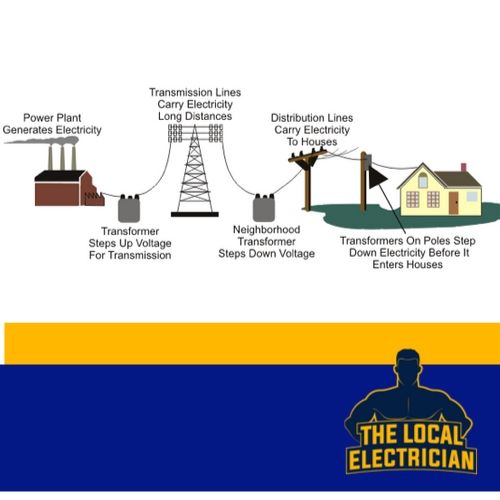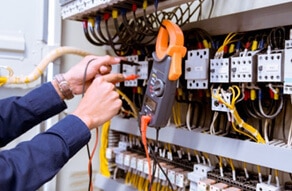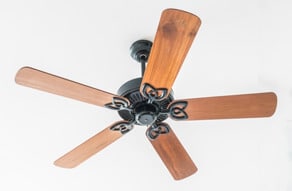Call us now
0439 823 190Understanding how Electricity is Stored in Grids?
Posted on October 4, 2019

Electricity grids have evolved over the years as a result of factors such as technological advancements and the increased demand for reliable sources of electricity. Initially, energy systems were small and localised. The two most common electricity systems in the early 1800s were direct and alternating current.
Electricians continue to manipulate various sources of electricity to meet the demand for the services. New technology offers better options that can be used to improve power grids. For example, new inventions can be used to store more energy to meet the demand from users even when the demand goes up.

Components of The Electricity Grid
Power Generators:
Power generators vary depending on the type of electric power. For example, wind turbines are used for wind energy and solar panels for solar energy.
Substation:
Electricians transform the low voltage energy generated to high voltage energy for long-distance transmission.
Transmission:
The high voltage energy is then fed into transmission lines for long-distance transmission to different users.
Substations:
Substations are located near power users. The high voltage electricity in the transmission lines is transformed into low voltage at this point.
Distribution:
Distribution lines have lower voltage as compared to transmission lines and are used to transport electricity to the users. The voltage at the power poles is further reduced to ensure that it is suitable for home and business use.
How Electricity is Stored in Grids?
- Compressed Air Energy Storage
When the demand for electricity is low, motors pump electrical energy into a large confined space. If the demand goes up, the stored air is released and heated to allow expansion. As the air expands, it drives turbines which in turn generate electricity. The technique has been used in major cities and quarries for decades now. It is more affordable as compared to many other methods and environmental-friendly. However, confined spaces are required. - High-Speed Flywheels
If the demand for electricity is low, electricians pass the electricity through a motor which accelerates a vacuum-sealed cylinder. The kinetic energy generated through the process is then converted back to electric energy when the demand rises. One of the advantages of using this technique for storing energy is that it is highly responsive to changing energy needs. However, the energy can only be used for short bursts as it can only last for 15 minutes. - Pumped Hydro
Electricians use electrical power to transfer huge volumes of water from a lower reservoir to an upper reservoir when the demand for electricity is low. If the demand goes up later, the water is released to generate electricity by rotating turbines. A significant amount of energy stored in the national grid is pumped hydro. The main benefit of this method is that it can generate large amounts of energy. A reservoir with a diameter measuring a kilometer and with a depth of 25 meters can generate 10,000 MWh. Storage facilities for this method can last for years. However, space for constructing a large water reservoir is needed. - Rail Energy Storage
If the demand for electricity is low, an electric train loaded with rocks moves up a slope. If the demand goes up later, it slides back down the slope to generate electrical power. Some cities have adopted this technique as it can generate large amounts of energy. However, it is only suitable in remote areas with hilly topography.
Electrical Services in Sydney
Level 2 electricians undergo training and are licensed for electrical work such as extensive installation services, repairs, and maintenance. A level 2 electrician is also allowed by Ausgrid and Endeavour Energy to handle live wire connections and metering equipment.
Once an electrician has undergone training, they are required to apply for accreditation and authorization from the relevant authorities before they start offering their services. If you are looking for electrical repair services in Sydney. Consider contacting The Local Electrician. We have qualified and experienced emergency electricians who can solve any electrical problems that you may have in your home or business premises.
Before you start searching for a qualified electrician, it is always advisable to define your needs. Always ensure that your only hire accredited and authorised electricians to handle all your emergency electrical problems. The experts should also do their work in a professional manner and have excellent communication skills.
Contact us today for an emergency level 2 electrician. We have 24 hour electricians operating on standby to service all of your Sydney electrical needs.
Lifetime Warranty on Workmanship and Labor
Our Services
Our skilled electricians are qualified to carry out any electrical repair or installation within Sydney. We strive to deliver absolute customer satisfaction by offering electrical services that are affordable, safe and long lasting.
- Private Power Pole Installation: What Sydney Homeowners Need To Know - November 29, 2023
- Understanding Power Outages: When To Call a Level 2 Electrician - November 14, 2023
- Understanding Level 2 Electrical Needs: FAQs for Sydney Homeowners - October 7, 2023
Our Level 2 Local Electrical Services










